Pentanoic acid
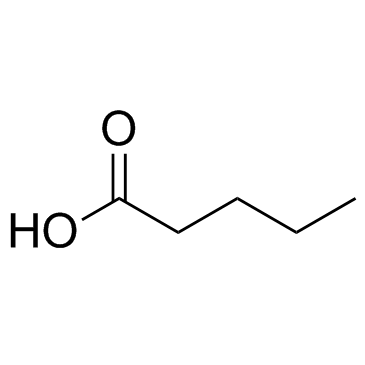
Pentanoic acid structure
|
Common Name | Pentanoic acid | ||
|---|---|---|---|---|
| CAS Number | 109-52-4 | Molecular Weight | 102.132 | |
| Density | 1.0±0.1 g/cm3 | Boiling Point | 185.3±3.0 °C at 760 mmHg | |
| Molecular Formula | C5H10O2 | Melting Point | −20-−18 °C(lit.) | |
| MSDS | Chinese USA | Flash Point | 88.9±0.0 °C | |
| Symbol |


GHS05, GHS07 |
Signal Word | Danger | |
Use of Pentanoic acidPentanoic acid, a short-chain fatty acid, is a product of bacterial metabolism and are associated with allergic skin disorders. Pentanoic acid activates ROCK signaling pathway. |
| Name | valeric acid |
|---|---|
| Synonym | More Synonyms |
| Description | Pentanoic acid, a short-chain fatty acid, is a product of bacterial metabolism and are associated with allergic skin disorders. Pentanoic acid activates ROCK signaling pathway. |
|---|---|
| Related Catalog | |
| Target |
Human Endogenous Metabolite ROCK |
| In Vitro | Pentanoic acid, a short-chain fatty acid, is a product of bacterial metabolism and are associated with allergic skin disorders. Pentanoic acid (0-2 mM) strongly and dose-dependently induces thymic stromal lymphopoietin (TSLP) production in PAM212 cells. Pentanoic acid slightly induces the expression of Tnfa, Il1b and Il6 mRNA, but does not induce the protein levels of TNF-α expression. Pentanoic acid (2 mM) induced-TSLP production in keratinocytes is not related to FFAR2 and FFAR3, but mediated by activating ROCK signaling pathway, and is competetely inhibited by co-inhibition of Gq/11 and the ROCK signaling pathway[1]. |
| Cell Assay | PAM212 murine keratinocytes are derived from BALB/c mouse skin. PAM212 cells are cultured in alpha minimal essential medium containing 10% heat-inactivated fetal bovine serum, penicillin G (15 μg/mL), and streptomycin (50 μg/mL) in a humidified atmosphere of 5% CO2/95% air at 37°C. Cells seeded at 50,000 cells/mL are grown for 24 h in culture medium. Cells are stimulated with Pentanoic acid for an appropriate period. Pretreatment with Y-27632, a highly potent and selective inhibitor of Rho-associated, coiled-coil containing protein kinase (ROCK), is carried out for 1 h, whereas pretreatment with YM-254890, a specific Gq/11 inhibitor, is carried out for 30 min[1]. |
| References |
| Density | 1.0±0.1 g/cm3 |
|---|---|
| Boiling Point | 185.3±3.0 °C at 760 mmHg |
| Melting Point | −20-−18 °C(lit.) |
| Molecular Formula | C5H10O2 |
| Molecular Weight | 102.132 |
| Flash Point | 88.9±0.0 °C |
| Exact Mass | 102.068077 |
| PSA | 37.30000 |
| LogP | 1.31 |
| Vapour density | 3.5 (vs air) |
| Vapour Pressure | 0.5±0.4 mmHg at 25°C |
| Index of Refraction | 1.421 |
| Water Solubility | 40 g/L (20 ºC) |
CHEMICAL IDENTIFICATION
HEALTH HAZARD DATAACUTE TOXICITY DATA
|
| Symbol |


GHS05, GHS07 |
|---|---|
| Signal Word | Danger |
| Hazard Statements | H302-H314-H412 |
| Precautionary Statements | P273-P280-P301 + P312 + P330-P303 + P361 + P353-P304 + P340 + P310-P305 + P351 + P338 |
| Personal Protective Equipment | Faceshields;full-face respirator (US);Gloves;Goggles;multi-purpose combination respirator cartridge (US);type ABEK (EN14387) respirator filter |
| Hazard Codes | C:Corrosive |
| Risk Phrases | R34;R52/53 |
| Safety Phrases | S26-S36-S45-S61 |
| RIDADR | UN 3265 8/PG 3 |
| WGK Germany | 1 |
| RTECS | YV6100000 |
| Packaging Group | III |
| Hazard Class | 8 |
| HS Code | 2915600000 |
| Precursor 10 | |
|---|---|
| DownStream 10 | |
| HS Code | 2915600000 |
|---|---|
| Summary | 2915600000 butanoic acids and pentanoic acids and their salts and esters VAT:17.0% Tax rebate rate:9.0% Supervision conditions:none MFN tariff:5.5% General tariff:30.0% |
|
Olfactometry Profiles and Quantitation of Volatile Sulfur Compounds of Swiss Tilsit Cheeses.
J. Agric. Food Chem. 63 , 7511-21, (2015) To establish the odor profiles of three differently fabricated commercial Swiss Tilsit cheeses, analyses were conducted using headspace solid-phase microextraction gas chromatography-mass spectrometry... |
|
|
GC/MS method for determining carbon isotope enrichment and concentration of underivatized short-chain fatty acids by direct aqueous solution injection of biogas digester samples.
Talanta 143 , 56-63, (2015) In anaerobic digestion of organic matter, several metabolic pathways are involved during the simultaneous production and consumption of short-chain fatty acids (SCFA) in general and acetate in particu... |
|
|
A predictive ligand-based Bayesian model for human drug-induced liver injury.
Drug Metab. Dispos. 38 , 2302-8, (2010) Drug-induced liver injury (DILI) is one of the most important reasons for drug development failure at both preapproval and postapproval stages. There has been increased interest in developing predicti... |
| Valeric Acid, Reagent |
| PENTANOIC ACID 100 ML |
| 3-(methylsulfanyl)propanoic acid |
| N-Valeric Acid |
| EINECS 203-677-2 |
| Valeric acid |
| N-Valeric Acid(Pentanoic Acid) |
| N-VALERICACID(PENTANOICACID) |
| VALERIC ACID(SG) |
| VALERIC ACID/PENTANOIC ACID |
| PENTANOIC ACID FOR SYNTHESIS |
| MFCD00004413 |
| N-PENTANOIC ACID |
| VALERICACID |
| PENTANOIC ACID (VALERIC) |
| Pentanoic acid |
 CAS#:71-41-0
CAS#:71-41-0 CAS#:7433-56-9
CAS#:7433-56-9 CAS#:108-29-2
CAS#:108-29-2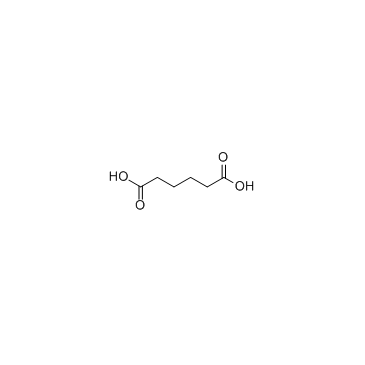 CAS#:124-04-9
CAS#:124-04-9 CAS#:110-62-3
CAS#:110-62-3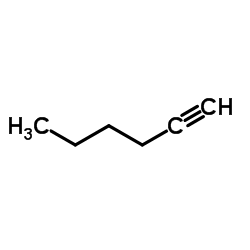 CAS#:693-02-7
CAS#:693-02-7 CAS#:7433-78-5
CAS#:7433-78-5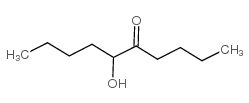 CAS#:6540-98-3
CAS#:6540-98-3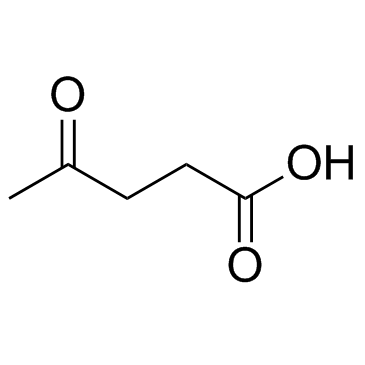 CAS#:123-76-2
CAS#:123-76-2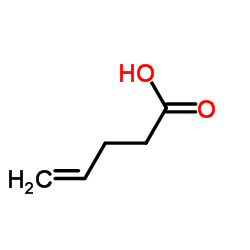 CAS#:591-80-0
CAS#:591-80-0 CAS#:10522-33-5
CAS#:10522-33-5![14-Butyldibenz[a,h]acridine structure](https://image.chemsrc.com/caspic/022/10457-58-6.png) CAS#:10457-58-6
CAS#:10457-58-6 CAS#:10415-86-8
CAS#:10415-86-8 CAS#:33083-83-9
CAS#:33083-83-9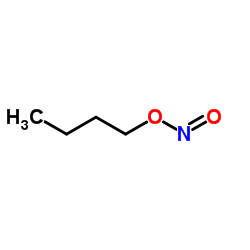 CAS#:544-16-1
CAS#:544-16-1 CAS#:928-45-0
CAS#:928-45-0 CAS#:591-68-4
CAS#:591-68-4 CAS#:39815-78-6
CAS#:39815-78-6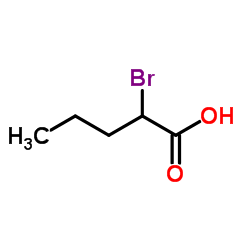 CAS#:584-93-0
CAS#:584-93-0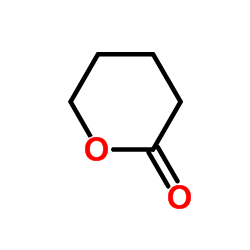 CAS#:542-28-9
CAS#:542-28-9
